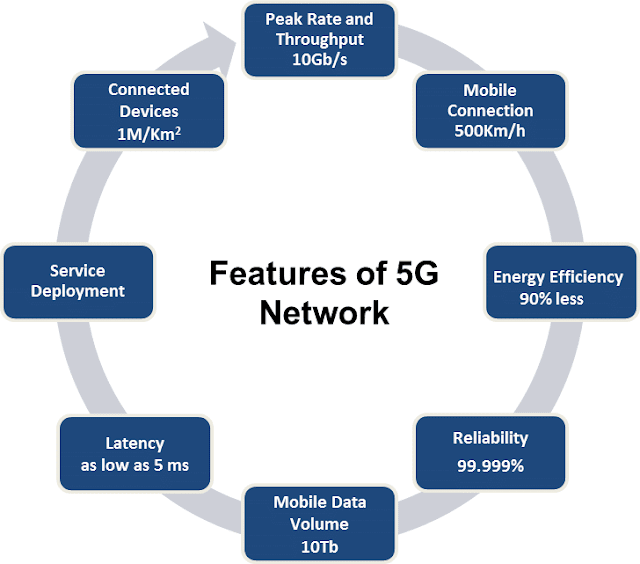Some key features include:
Higher Data Rates: 5G offers significantly higher data rates compared to its predecessors. It promises to deliver multi-gigabit-per-second peak data rates, enabling faster download and upload speeds for users.
Low Latency: One of the most touted features of 5G is its low latency, which refers to the time it takes for data to travel between the source and destination. This low latency is crucial for applications that require real-time communication, such as online gaming, autonomous vehicles, and augmented reality.
Massive Device Connectivity: 5G is designed to support a massive number of connected devices simultaneously. This is essential for the growing Internet of Things (IoT) ecosystem, where numerous devices need to communicate efficiently and without congestion.
Network Slicing: 5G introduces the concept of network slicing, which allows the network to be divided into multiple virtual networks to meet the specific needs of different applications or services. Each slice can have its own characteristics, such as speed, capacity, and latency, tailored to the requirements of the applications using it.
Beamforming Technology: 5G utilizes advanced antenna technologies, including beamforming and massive MIMO (Multiple Input, Multiple Output). Beamforming enables more precise targeting of signals, improving signal strength and reliability, especially in crowded environments.
Improved Energy Efficiency: 5G is designed to be more energy-efficient than previous generations, which is crucial for sustainability. This is achieved through features like dynamic resource allocation and the ability to put parts of the network infrastructure into sleep mode during periods of low activity.
Enhanced Mobile Broadband (eMBB): 5G provides a significant boost in mobile broadband capabilities, allowing for faster and more reliable internet access on mobile devices. This is particularly important for bandwidth-intensive applications like high-quality video streaming and virtual reality.
Ultra-Reliable Low Latency Communications (URLLC): 5G supports applications that demand ultra-reliable and low-latency communication, such as critical infrastructure control, remote surgery, and other mission-critical use cases.
Integration of Multiple Technologies: 5G is designed to seamlessly integrate with existing technologies, including 4G/LTE, Wi-Fi, and others, creating a more interconnected and versatile communication landscape.
These features collectively contribute to making 5G a transformative technology that can support a wide range of applications and services, from enhanced mobile broadband to critical IoT communication and beyond.
